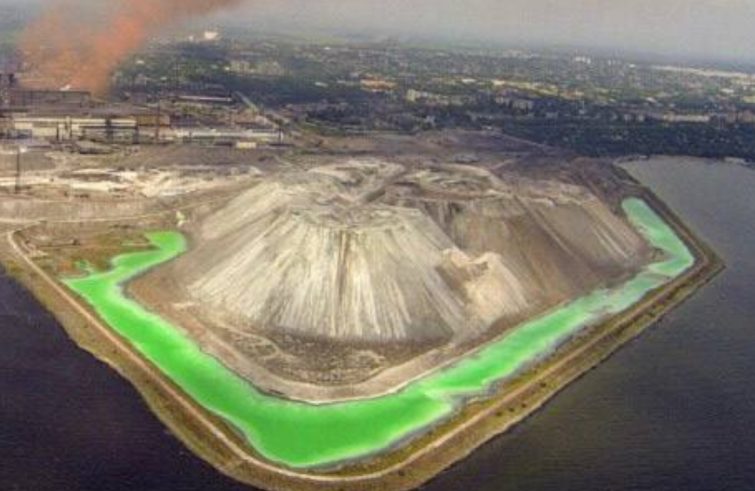
Not only war crimes and crimes against humanity. “Environmental crimes” are also being committed in Ukraine, and very serious ones, for, as environmentalists warn, “the wounds inflicted by the Russian army on Ukraine’s forests, steppes and reservoirs will last for decades, and the vestiges of war will be continue being at risk even after the weapons go silent”. The Ukrainian Greek Catholic Church’s Office for Ecology sounded the alarm and published on its website a detailed report on the environmental “damages” caused during the war, based on the findings of Ekodia, a non-governmental organisation. The scale of the “devastation” is staggering, with over 200 “ecocides” recorded by Ekodia so far. The largest number of these crimes occurred in Kyiv, Slobozhanshchyna, Donetsk and southern Ukraine. But almost all regions of Ukraine were affected by the Russian warfare and the full picture will only be known after the war. Russian troops shelled oil depots and large industrial plants throughout Ukraine since the start of the war. Heavy metals from ammunition and weaponry in general have penetrated the soil and aquifers. Forest and steppe fires have destroyed the natural environment of rare species.
According to the UN, Ukraine is one of the most mine-contaminated countries in the world, with more than 80,000 square kilometres of its territory that must be cleared of landmines and explosive remnants.
War mercilessly destroys the entire natural environment: air, water, land, plants and animals. And Ukraine – said Environmental Protection Minister Ruslan Strelets – could become the first country in the world to receive compensation for damage caused by environmental war crimes, already estimated at hundreds of billions of Ukrainian hryvnias.
Toxic waste emissions from industrial plants. The latest alarm – in chronological order – was sounded by the local administration of Mariupol on Telegram regarding the Sea of Azov. “There is a threat of complete extinction of the Sea of Azov,” the post reads. “The Russian bombardment of the Azovstal steelworks could damage a technical structure that holds tens of thousands of tonnes of concentrated hydrogen sulphide solution. The leakage of this fluid would kill all flora and fauna in the Sea of Azov. These hazardous substances could then flow into the Black Sea and the Mediterranean Sea.
The mayor of Mariupol Vadym Boychenko called for immediate access to the facility by national and UN experts to “study the situation and prevent an environmental disaster at global level.”
Ekodia confirmed that in addition to the radioactive risk, the shelling and occupation increase the risk of toxic waste emissions from Ukrainian industrial facilities. Most of them are located in the eastern part of the country, where there are ongoing hostilities.
Fires. Fires are threatening vast areas of southern and eastern Ukraine with increased risk in the summer months. Wildfires are spreading because of the fighting in and around the forests and due to the ongoing war. There is virtually no one who can intervene to extinguish the flames. Furthermore, hazardous emissions are arising from fires at oil depots. The Russian bombing of oil depots and petrol stations, as well as the fires, released columns of toxic black smoke lasting for days”, reads the report. “The strike against chemical plants such as Rubizhne in the Luhansk region or Sumy, dispersed nitric acid and ammonium. Not to mention the chemicals released from the explosion of bombs and missiles. Their fragments fall into the ground and pollute the soil as well as the groundwater.
Metal wreckage. Thousands of Russian tanks and heavy armoured vehicles are causing strong environmental pollution. “When the war is over, the disposal of such quantities of scrap metal will be yet a further challenge. Recycling military scrap metal is a complex and time-consuming process,” explains Yevhenia Zasyadko at Ecodia.
Water crisis. Ukraine has been facing water shortages and poor water quality even before the war. It ranked 125th (out of 180 countries) in terms of clean drinking water supply. The eastern and southern regions bordering the Sea of Azov, in particular, were water-scarce. Sadly, the situation is only going to get worse. The shelling of water treatment plants, such as the one in Vasylkiv, the destruction of water systems and other water infrastructure, and the inability to repair them quickly, are bound to impact on water quality and quantity.
Endangered wildlife. WWF Ukraine has raised the alarm. War is altering the natural habitats and migratory corridors of numerous animals, including rare species. This is also the most critical time of the year, and the “noise” of the war, together with the devastation of natural habitats and stress are likely to disrupt the vital life cycles of birds and mammals. Ukraine is situated at the crossroads of crucial bird migration routes in the Western Palearctic and Afro-Eurasian regions, on which more than 400 bird species depend.
Some 30,000 breeding pairs of white storks and approximately 500 pairs of rare black storks are migrating to Ukraine for nesting and are endangered.
The war has also seriously impacted the Black Sea ecosystem to the extent that dolphins were recently found dead on the shores of the Tuzla Estuaries National Nature Park in the Odessa region.








